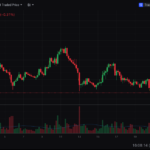Copper prices experienced a sharp decline of over 1%, driven by the Federal Reserve’s hawkish stance signaling fewer interest rate cuts in the coming year. This shift has sent ripples through global markets, impacting commodities, currencies, and investor sentiment.
Market Reaction to Fed’s Hawkish Tone
The Federal Reserve’s unexpected pivot to a more restrictive monetary policy outlook has triggered significant market reactions. Treasury yields have risen sharply, and the U.S. dollar surged to a 25-month high, adding pressure on commodities priced in the greenback. Increased volatility has left market participants concerned about the absence of any foreseeable catalyst to reverse this trend.
The three-month copper contract on the London Metal Exchange (LME) dropped 1.5% to $8,912 per tonne, reflecting the broader impact of tightening monetary policy. Analysts warn that copper’s downward trajectory could persist unless market conditions change significantly.
External Headwinds Intensify
Beyond the Fed’s policy direction, copper markets are also grappling with external challenges. Imminent U.S. tariffs on Chinese goods add to the geopolitical uncertainty. At the same time, doubts about China’s domestic demand—historically a cornerstone of global copper consumption—have further dampened optimism.
China’s economic struggles, coupled with ongoing global trade tensions, present a double-edged sword for the copper market. With these pressures mounting, the demand outlook for industrial metals remains under scrutiny.
Key Takeaways for Investors
While the bearish trend in copper prices appears dominant in the short term, market participants may find opportunities during periods of heightened volatility. Traders should watch closely for shifts in monetary policy, trade developments, and Chinese economic indicators, which could offer clues for potential price reversals or further declines.
Disclaimer: This article is for informational purposes only and does not constitute financial or investment advice. Always conduct thorough research or consult with a financial advisor before making investment decisions.







